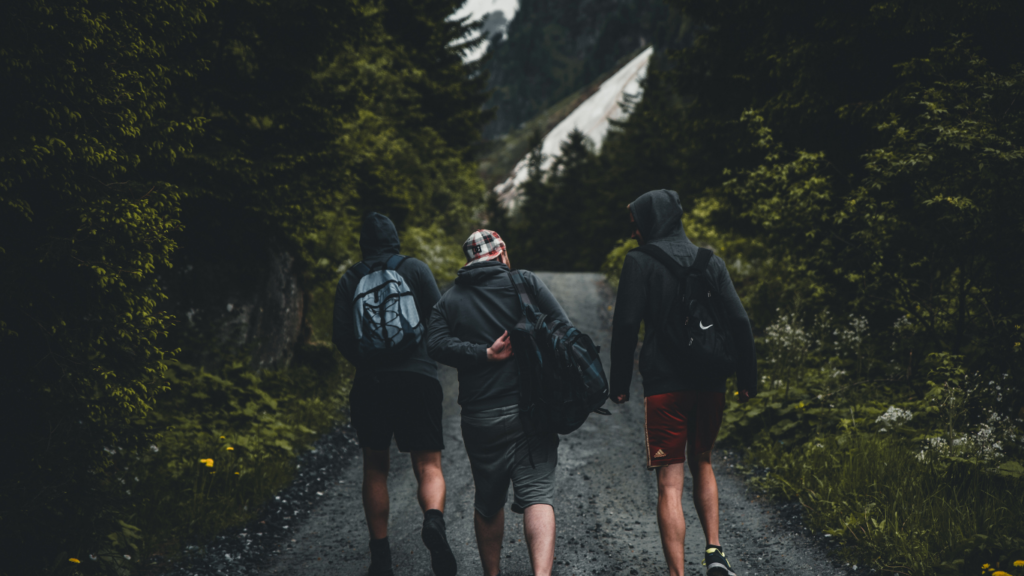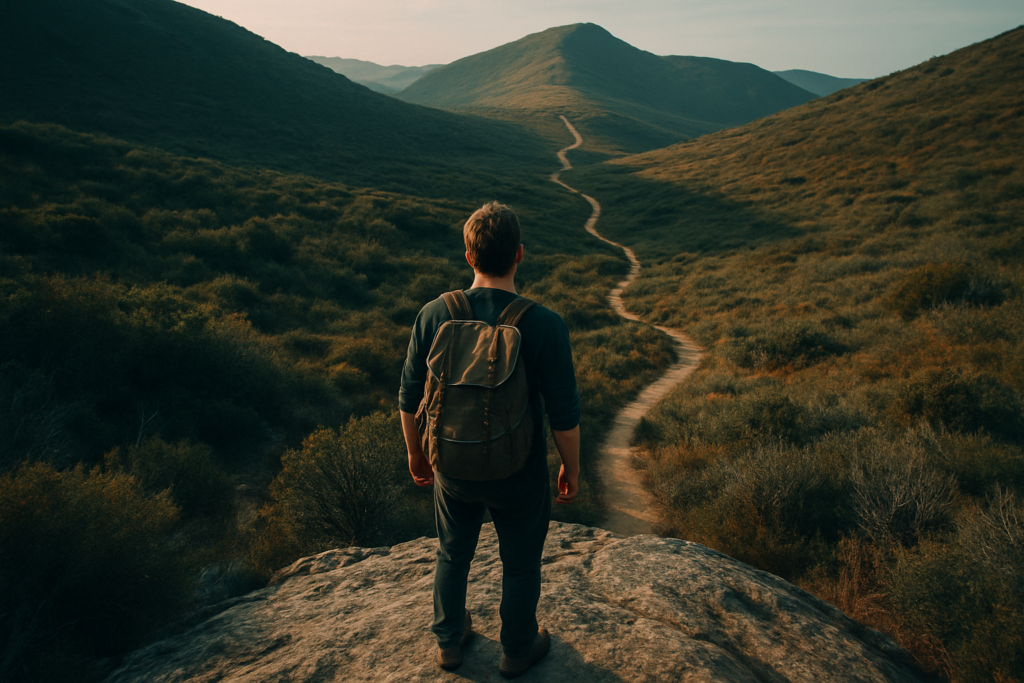The Appeal of Challenging Hiking Trails
These demanding paths captivate seasoned explorers for several reasons. They offer a unique combination of physical and mental challenges that push boundaries. The sense of accomplishment after completing such trails is unmatched. Breathtaking views, rarely seen by casual hikers, provide ample reward for the effort.
Physical Challenges
Challenging trails test one’s endurance and strength. Steep inclines, rugged terrain, and varying climates demand peak physical condition. For example, the Appalachian Trail stretches over 2,200 miles and includes both intense elevation changes and remote wilderness areas.
Mental Fortitude
Navigating these trails requires unwavering mental determination. Long distances, isolation, and unexpected obstacles test psychological resilience. The Pacific Crest Trail, spanning 2,650 miles, presents hikers with diverse and demanding conditions, from scorching deserts to perilous snow-covered mountains.
Preparation and Safety
Preparation is paramount for these expeditions. Detailed research, physical training, and proper gear selection are crucial. For instance, those undertaking the Torres del Paine Circuit in Patagonia must plan for unpredictable weather and demanding river crossings. Knowledge of survival skills and first aid enhances safety.
Unique Experiences
Challenging trails create unforgettable experiences. Hikers can witness untamed wildlife, pristine landscapes, and star-filled night skies. Completing the Everest Base Camp Trek offers magnificent views of the world’s highest peaks and a deep sense of camaraderie with fellow adventurers.
Personal Growth
These hikes foster personal growth. Overcoming demanding conditions leads to increased self-confidence and a renewed appreciation for nature. The John Muir Trail, noted for its striking Sierra Nevada scenery, inspires a deep sense of inner reflection and respect for the natural world.
Community and Camaraderie
Tough trails often create a strong sense of community among hikers. Shared experiences, hardships, and victories strengthen bonds. The camaraderie on Spain’s Camino de Santiago, a 500-mile pilgrimage, highlights the power of shared journeys in creating lifelong friendships.
Essential Gear for Seasoned Hikers
Seasoned hikers understand the critical need for high-quality gear. Proper equipment ensures safety, comfort, and efficiency, especially on challenging trails.
Footwear
Sturdy boots with good ankle support are mandatory. Choose waterproof models for wet conditions, like those on the Appalachian Trail. In warmer climates, breathable mesh options help keep feet cool. Thick, moisture-wicking socks prevent blisters and discomfort.
Clothing
Layered clothing offers versatility and protection. Base layers should be moisture-wicking to keep skin dry. Insulating layers like fleece jackets provide warmth. Waterproof, windproof outer layers guard against harsh weather. In Patagonia’s unpredictable climate, this system is invaluable.
Navigation Tools
Reliable navigation tools are indispensable. Topographic maps and a compass serve as fundamental aids. GPS devices, coupled with downloadable trail maps, enhance precision. On the Pacific Crest Trail, where the path may be less defined, these tools are crucial.
Hydration Systems
Hydration systems prevent dehydration. Lightweight water bottles or hydration bladders with hose attachments allow easy access. Include water purification tablets or filters to ensure safe drinking water from natural sources.
Cooking Gear
Compact cooking solutions are vital for multi-day hikes. Portable stoves and fuel canisters enable food preparation. Lightweight pots, pans, and sporks ensure meal convenience without adding unnecessary weight.
Emergency Kit
An emergency kit with first aid essentials is non-negotiable. Bandages, antiseptic wipes, and pain relievers treat common injuries. Include:
- a multi-tool
- whistle
- fire-starting equipment to address unforeseen challenges
Shelter
Lightweight, durable tents provide shelter. Look for those with good ventilation and rain protection. Hammocks offer an alternative in forested areas such as those found along the Torres del Paine Circuit.
Backpack
A well-fitted backpack distributes weight evenly. Ensure it has padded shoulder straps and a hip belt. Choose a capacity based on hike duration—typically 50-70 liters for multi-day journeys.
Lighting
Reliable lighting is critical for navigating and setting up camp in the dark. Choose headlamps with high lumens and long battery life. Batteries or a portable solar charger ensure you stay illuminated.
Trekking Poles
Trekking poles help maintain balance and reduce strain. Adjustable, lightweight poles enhance stability, especially on uneven terrain.
Equipped with these essentials, seasoned hikers can confidently tackle the most challenging trails.
Notable Trails Around the World
Exploring the most challenging hiking trails offers seasoned hikers unmatched experiences. Several trails around the globe stand out for their difficulty and beauty.
The Appalachian Trail, USA
The Appalachian Trail spans 2,193 miles from Georgia to Maine. It traverses diverse landscapes, including forests and mountains. Hikers face rugged terrains, steep climbs, and unpredictable weather. Despite these challenges, the trail rewards perseverance with breathtaking views, varied flora, and rich fauna.
The Inca Trail, Peru
The Inca Trail stretches 26 miles to Machu Picchu. This trail mixes ancient Incan sites, lush cloud forests, and stunning mountain passes. Elevations reach up to 13,828 feet, testing endurance and acclimatization skills. The culmination at Machu Picchu offers a historical and scenic payoff unmatched by other trails.
Mount Kilimanjaro, Tanzania
Mount Kilimanjaro stands at 19,341 feet, making it Africa’s tallest peak. The trek covers various climate zones, from rainforest to arctic, demanding physical and mental resilience. Hikers often face altitude sickness, requiring careful acclimatization and preparation to succeed in summiting this iconic peak.
The Torres del Paine Circuit, Chile
The Torres del Paine Circuit is a 80-mile loop in Patagonia. Hikers navigate through granite towers, glacial lakes, and vast valleys. Strong winds, sudden weather shifts, and strenuous climbs make this trail a formidable challenge. Its remote beauty and rugged terrain continuously captivate seasoned explorers.
Preparing for Extreme Conditions
Challenging hiking trails demand proper preparation. Seasoned explorers understand the importance of conditioning both body and mind.
Physical Training
Physical fitness is crucial for enduring harsh trails. Regular cardio exercises, including running and cycling, improve stamina. Strength training, like weightlifting and bodyweight exercises, targets muscles used during hiking. Consistent hiking practice on varied terrains acclimates the body to different environmental conditions.
Mental Preparation
Mental resilience distinguishes successful hikers. Visualization techniques help anticipate challenges and plan responses. Positive self-talk and setting incremental goals maintain focus and motivation. Practicing mindfulness and stress-management techniques aids in maintaining calm under pressure.
Navigational Skills
Navigational proficiency prevents getting lost. Familiarizing with topographic maps and learning to use a compass ensures accuracy. Utilizing GPS devices as supplemental tools provides real-time location data. Regular practice in diverse, trail-like environments increases confidence in navigating unfamiliar terrains.
Top Tips for Safety and Success
- Planning for Safety
Ensure to plan meticulously before hitting the trail. Gather route information, check weather forecasts, and inform someone about your plans. Carry a detailed map, a reliable compass, and a backup GPS device. Knowing the terrain and potential hazards helps avoid surprises. - Essential Gear
Pack appropriate gear for different scenarios. Wear moisture-wicking clothing, bring a waterproof jacket, and sturdy hiking boots. Carrying a first-aid kit, high-energy snacks, and extra water is crucial. A multi-tool, headlamp, and emergency shelter are critical for unexpected situations. - Staying Hydrated
Maintain hydration by drinking regularly. Carry water purification tablets or a portable water filter to make potable water from streams and lakes. Dehydration reduces performance and increases the risk of heat-related illnesses, so monitor your water intake constantly. - Pacing Yourself
Avoid rushing by setting a steady pace. Conserve energy by taking regular breaks and assessing your energy levels. Recognize signs of fatigue and rest adequately. A balanced pace ensures endurance and minimizes the risk of injuries. - Altitude Acclimatization
For high-altitude hikes, acclimatize properly. Ascend gradually, allowing your body to adapt to elevation changes. Symptoms like headaches, dizziness, or nausea indicate altitude sickness, necessitating descent to lower altitudes if they appear. - Wildlife Awareness
Stay aware of wildlife to prevent encounters. Learn about local animals and how to react if you encounter them. Store food securely, and avoid feeding wildlife. Maintain a safe distance and make noise to alert animals of your presence. - Emergency Preparedness
Prepare for emergencies by knowing basic first aid and carrying a personal locator beacon (PLB). Familiarize yourself with evacuation routes and emergency contact numbers. Training in wilderness survival skills adds a layer of security. - Physical Conditioning
Stay in top shape for demanding trails. Regular cardio workouts, strength training, and flexibility exercises enhance endurance. Include hiking practice on varied terrains to simulate trail conditions. Fitness reduces injury risk and improves overall trail performance.
By following these top tips, seasoned hikers pave the way for safer and more successful trekking adventures on the world’s most challenging hiking trails.




